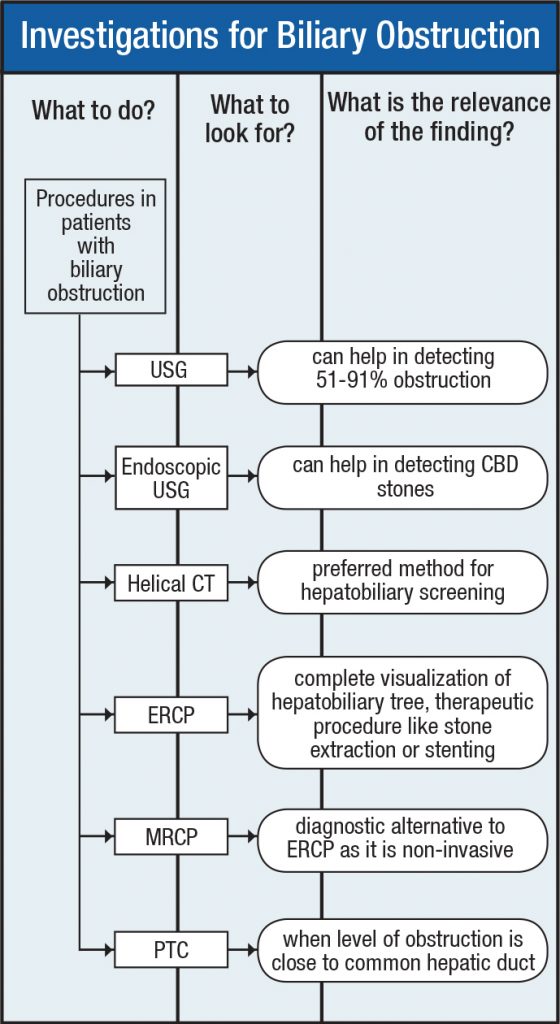Jaundice or hyperbilirubinaemia is one of the best indicators of liver function. Serum bilirubin is therefore used as a prognostic marker in all viral or alcoholic hepatitis and cirrhosis. For clinical purposes, jaundice is classified as conjugated (direct) and unconjugated (indirect) depending upon the type of bile pigment in the blood. Identification of the type of hyperbilirubinaemia gives a clue to the possible underlying cause of jaundice.
Plasma elevation of predominantly unconjugated bilirubin is a result of overproduction of bilirubin (such as with haemolysis), impaired bilirubin uptake, or abnormalities of conjugation. Elevation of both unconjugated and conjugated bilirubin is seen in hepatocellular disease. Plasma elevation of predominantly conjugated bilirubin is suggestive of biliary obstruction, which may be intrahepatic or extrahepatic in origin. Although jaundice sets in gradually in most instances, it
is a medical emergency in some situations. It is therefore very important to identify these situations promptly.
After a detailed clinical history and physical examination, initial laboratory tests include measurements of serum total, conjugated (direct) and unconjugated (indirect) bilirubin, alkaline phosphatase (ALP), aminotransferases (AST & ALT), prothrombin time (PT), and albumin. The presence or absence of abnormalities and the type of abnormalities provide a broad
guideline for the initial distinction between the different causes of jaundice. If liver enzymes are normal, it suggests that jaundice is not due to hepatic injury or biliary tract disease. In such patients, haemolysis or inherited disorders of bilirubin metabolism may be responsible for the hyperbilirubinaemia.
Predominant elevation of AST & ALT suggests that jaundice is caused by intrinsic hepatocellular disease. The two most common causes are Alcoholic Hepatitis and Viral Hepatitis. The first is associated with a disproportionate elevation of AST compared to ALT, with both values being less than 500 IU/L. Viral Hepatitis is associated with different serological markers
based on the type of virus. Occasionally, a liver biopsy is necessary for confirmation of diagnosis. Indicators of advanced hepatic disease in alcoholic or viral Hepatitis include a high (> 5 mg/dl) or rising serum bilirubin, hypoalbuminaemia and a prolonged PT which does not correct with Vitamin K administration.
Biliary obstruction is suspected if there is a predominant elevation of ALP in relation to AST and ALT, presence of right upper quadrant pain, prolonged PT and a history of pale (acholic) stools. The most common causes of biliary obstruction are either common bile duct stones or tumours of the biliary tract or pancreas. In cases of suspected biliary obstruction, imaging studies are indicated to identify the cause and level of obstruction.
The Kokilaben Hospital Clinic for Diseases of the Liver, Gallbladder and Pancreas provides a one-stop service for all patients with jaundice. The patient is first assessed by a hepatologist, and then undergoes liver function tests and ultrasound. If a surgical cause is suspected, he/she is seen by a hepato-pancreatobiliary surgeon. This helps in early diagnosis of the cause of jaundice with early treatment.

 Back to Site
Back to Site